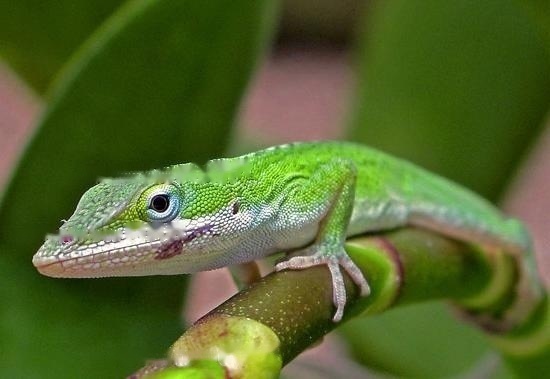
Crystal refraction discoloration theory
According to AFP report on March 10, 2015, researchers found that chameleon The color is not changed by pigments, but by adjusting the nanocrystals on the surface of the skin to change the color by changing the refraction of light. According to the research team, this principle has also been used to explain the color changing process of chameleons before. But that claim has now been proven false. Biologist Michel Milinkovic of the University of Geneva said: We were very surprised. People thought that they changed color through pigments, but the real principle is completely different.
To chameleons Analysis of the skin revealed that the chameleon's color change is controlled by transparent nanomaterials called photonic crystals. Photonic crystals are located in the iris layer, below the chameleon's pigment cells.
The University of Geneva said in a report that chameleons can change the refraction of light by tuning the structure of nanocrystals within the rainbow cells. When the chameleon is calm, the nanocrystals are distributed in a dense network, refracting blue light. When the chameleon is excited, the nanocrystal structure becomes loose, so the refracted light takes on other colors such as yellow or red.
They found that chameleons also have a deeper layer of iridophores. The cells consist of larger, more irregular crystals that refract strong light and are essentially a smart heat shield.
The bilayer distribution of iris cells is a novel feature of evolution. This allows chameleons to rapidly switch between effective protective and bright colors, while providing passive thermal protection, the team said. Other reptiles have only An irreversible iris [7].
Pigment color change theory
The color change of a chameleon depends on three layers of pigment cells in the skin. Unlike other reptiles, the ability of chameleons to change body color depends entirely on pigment cells in the surface layer of the skin, which are filled with pigments of different colors. Anderson from the Department of Biology at Cornell University in New York explained in detail the color changing principle of chameleons: chameleon skin has three layers of pigment cells, the deepest layer is composed of melanocytes, which carry melanin that can interact with the previous one. Layer cells blend with each other; the middle layer is composed of guanine cells, which mainly regulate dark blue pigments; the outermost cells are mainly yellow and red pigments. Anderson said, Based on the neurological regulation mechanism, the pigment cells will blend and transform between the layers under the stimulation of nerves, realizing various changes in the color of the chameleon's body.
The origin of the chameleon is Africa, According to their living habits, it is best for breeders to use a breeding box with branches to set up a small home for the chameleons. At the same time, try to ensure that there is natural sunlight. The ideal condition is that the chameleons receive 30 minutes of sunlight every day, and the best sunlight time is in the morning and before meals. , in natural light, the color of the chameleon will be brighter and more vivid.
The chameleon is a cold-blooded animal, so it has similarities with tropical fish in the breeding process: the temperature conditions are higher. Usually the temperature should be kept at 28°C to 32°C during the day and 22°C to 26°C at night. If the chameleon is in a low temperature state for a long time, the chameleon will lose its appetite and slow down its growth, and even affect its health.
The main food of chameleons is insects. Most chameleons will become anorexia on a single food and will refuse to eat until they die.
![[Dog Training 5] The training method of pet dog dining etiquette](/static/img/12192/12192_1.jpg)




